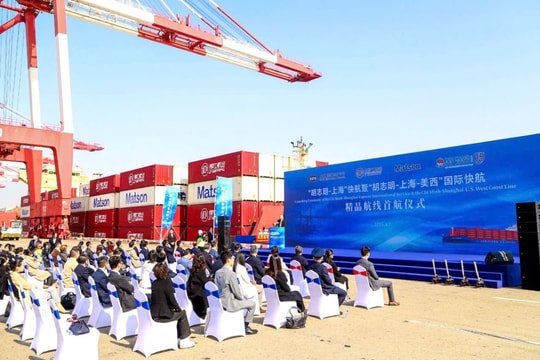
Localization of the Supply Chain: An Inevitable Transformation
For decades, globalization fueled the development of long, complex supply chains that optimized production costs by leveraging inexpensive resources in developing countries. However, the COVID-19 crisis, the Russia-Ukraine conflict, and growing political and economic instability in many regions have exposed critical vulnerabilities in this model.
According to a report by McKinsey, around 93% of global supply chain leaders are actively seeking to localize or shorten their supply chains to reduce dependence on distant nations.
Localization is not only aimed at mitigating risks from international disruptions but also meeting rising domestic consumer demand for products with transparent origins, high standards, and environmental friendliness.
Advantages and Challenges of Supply Chain Localization
Advantages:
- Improved oversight: Localization enables businesses to better monitor and control production and operational processes.
- Faster delivery: Shorter distances enhance delivery speed and customer experience.
- Brand enhancement: “Made local” products are increasingly favored by consumers for their transparency and social responsibility.
Challenges:
- High initial investment costs: Building domestic factories and supply networks requires significant resources.
- Skilled labor shortages: Some countries may lack a well-developed industrial base and face a shortage of skilled workers.
- Limited economies of scale: Domestic production may not achieve the cost-efficiency of global-scale operations.
"Cost optimization is no longer the sole objective. Resilience and market responsiveness are now key criteria in post-pandemic supply chain design."
— Sandra MacQuillan, Chief Supply Chain Officer, Mondelez International
Case Study: Apple and the “Nearshoring” Strategy
Apple, the American tech giant, is a prime example of the shift toward supply chain relocation. To reduce its reliance on China, Apple has expanded production in India and Vietnam. Foxconn—Apple’s main manufacturing partner—is investing billions of dollars to expand its operations in India.
This nearshoring strategy not only helps Apple avoid risks from the U.S.-China trade war but also gives it greater flexibility in meeting stringent labor, environmental, and logistics cost requirements.
“Shorter, more localized supply chains are proving more resilient to unexpected external shocks.” — David Simchi-Levi, MIT Professor and leading supply chain expert

The Future of Supply Chains: Balancing Globalization and Localization
Despite the growing trend of localization, experts warn that a full retreat from globalization is unrealistic. The "glocalization" model—combining local production with the advantages of global sourcing—is expected to be the key to achieving cost efficiency, speed, and resilience in future supply chains.
In this context, businesses must restructure their supply networks to be more agile and risk-diversified, while leveraging technology to optimize cross-border operations.
“Rather than choosing an extreme path, the future of supply chains lies in blending the benefits of globalization with the flexibility of localization.” — Jonathan Wright, Global VP of Supply Chain at IBM Consulting
Localization is emerging as an essential strategy, enabling companies to boost resilience and maintain competitiveness. However, to succeed, organizations must clearly determine which segments should be localized and which should retain global advantages. Strategically and flexibly restructuring supply chains will be the key to unlocking sustainable growth in the coming decade.


.jpg)





.png)
.png)
.png)
.png)



.png)






.png)